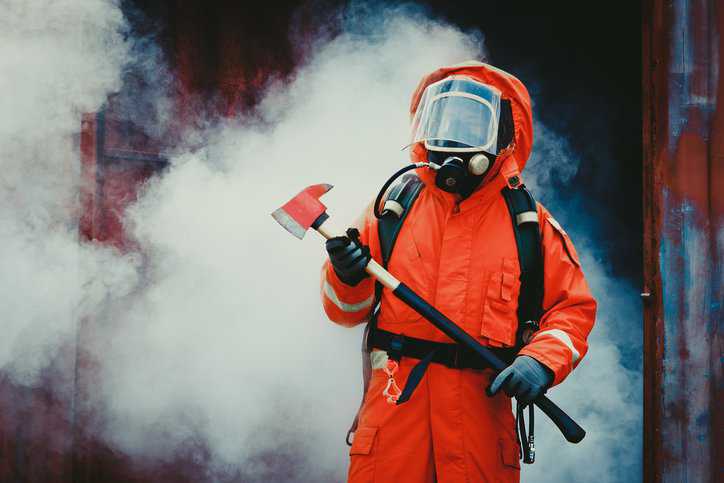From dangerous gas leaks to fires, life-threatening situations can occur in seconds. In these emergency situations, rescue workers and people in danger must have quick access to equipment that enables them to safely breathe. Luckily, respiratory protective smoke escape devices offer the solution. ANSI/ISEA 110-2009: American National Standard For Air-Purifying Respiratory Protective Smoke Escape Devices provides minimum requirements for respiratory protective escape devices that offer up to 15 minutes of protection for the wearer to evacuate to a safe location.
What Are Respiratory Protective Smoke Escape Devices (RPEDs)?
A smoke hood, also called a respiratory protective smoke escape devices (RPED), is a hood wherein a transparent airtight bag seals around the head of the wearer while an air filter held in the mouth connects to the outside atmosphere and is used to breathe. Essentially, it is an emergency device that helps people escape through areas with toxic gases, fumes, smokes, particulate matter, or other atmospheres that are immediately dangerous to life or health. These hazards can cause cancer, lung impairment, disease, or even death. In fact, every second in which the body is depleted of oxygen or exposed to high concentration of poisonous substances can result in acute or long-lasting harm to health. As such, RPEDs use filters to trap poisonous fumes and carbon monoxide, allowing the wearer to breathe and safely escape throughout the evacuation.
What Is ANSI/ISEA 110?
ANSI/ISEA 110-2009 provides requirements for the design, performance, testing, and certification of air-purifying respiratory protective smoke escape devices (RPEDs) for the immediate emergency evacuation without entry/re-entry of adult civilians. Such devices are intended to be used by persons escaping from fire-generated products of combustion. RPEDs provide head, eye, and respiratory protection from particulate matter, eye irritants, carbon monoxide, and other toxic gases commonly produced by fire.
Moreover, the requirements of the American National Standard specify an air-purifying respiratory protective escape device with a laboratory-tested 15-minute service life intended to provide head, eye, and respiratory protection from particulate matter, irritants, and toxic gases and vapors commonly produced by fire.
ANSI/ISEA 110-2009 should not apply to respiratory protective smoke escape devices that are designed for use in circumstances where an oxygen deficiency (oxygen less than 19.5 percent by volume) exists or might exist.
Smoke Hood Function
The most important essential function of a smoke hood is to convert toxic carbon monoxide to relatively harmless carbon dioxide via a catalytic process. To do so, smoke hoods are made of heat-resistant materials and have a tight seal around the head to prevent smoke from entering, shield the wearer’s head from heat and radiation, and protect the wearer’s eyes from harmful gases. Most smoke hood designs use some form of activated charcoal filter to screen out corrosive gases like ammonia, chlorine, and acid gases (e.g., hydrogen chloride and hydrogen sulfide) to provide clean air for the wearer to breathe for a limited time.
RPED Certification to ANSI/ISEA 110
Respiratory protective smoke escape devices (RPEDs) that are labeled as compliant to ANSI/ISEA 110-2009 should meet all applicable requirements specified in this standard. According to the American National Standard, for both the initial certification and annual conformance testing of the RPED, the certification organization should be responsible for all inspection, evaluation, conditioning, and testing as specified in ANSI/ISEA 110-2009. The certification organization should also audit the manufacturer’s quality assurance program to ensure that the quality assurance program provides continued product compliance with this standard.
ANSI/ISEA 110-2009: American National Standard For Air-Purifying Respiratory Protective Smoke Escape Devices is available on the ANSI Webstore.
